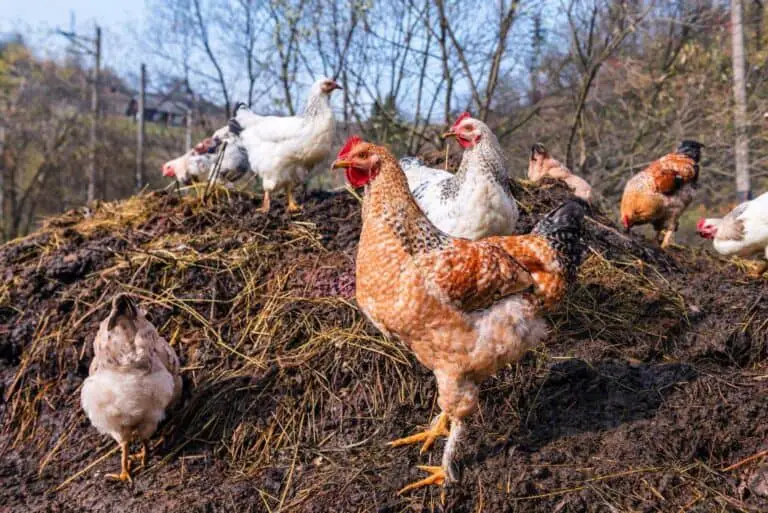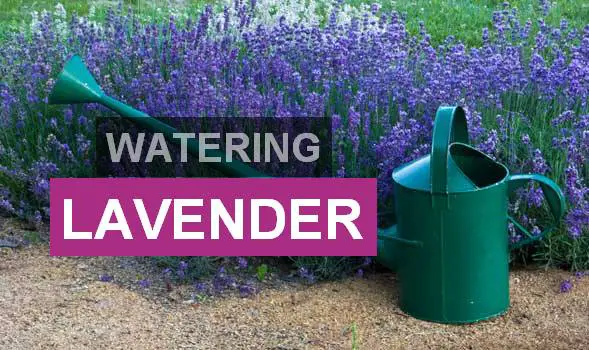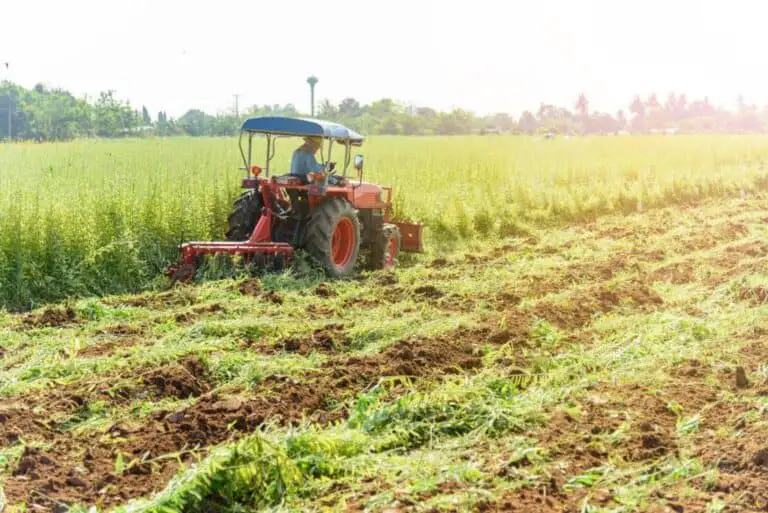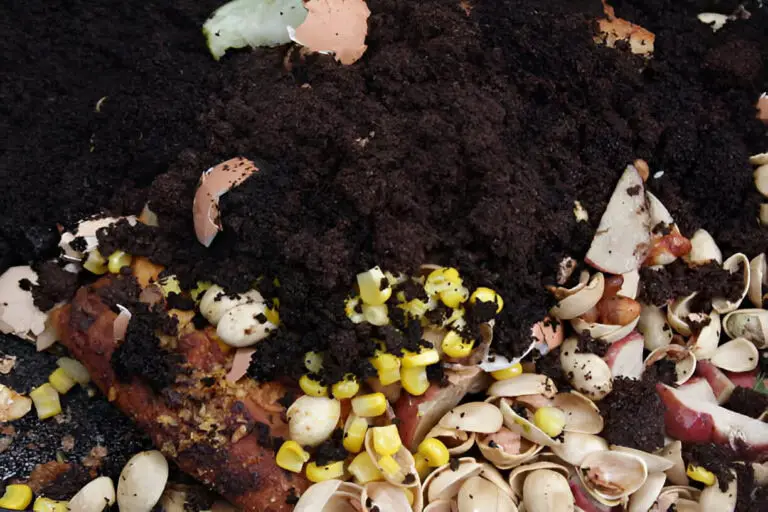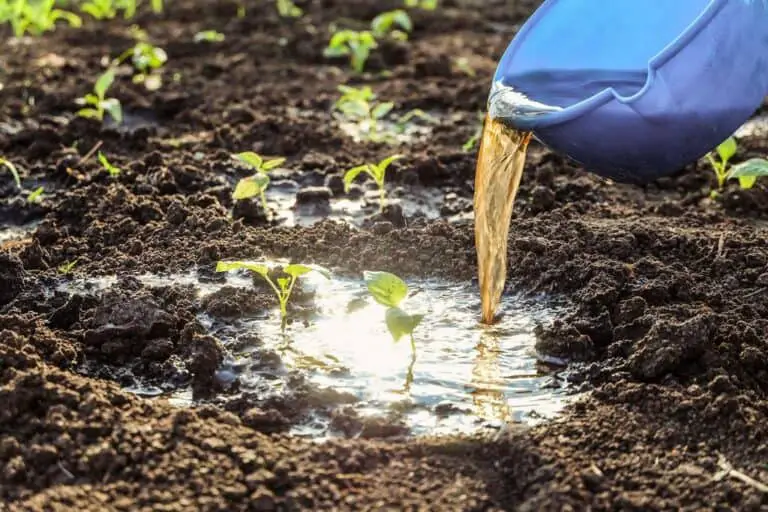How to Sterilize Compost to Ensure Healthy Soil (A Comprehensive Guide)
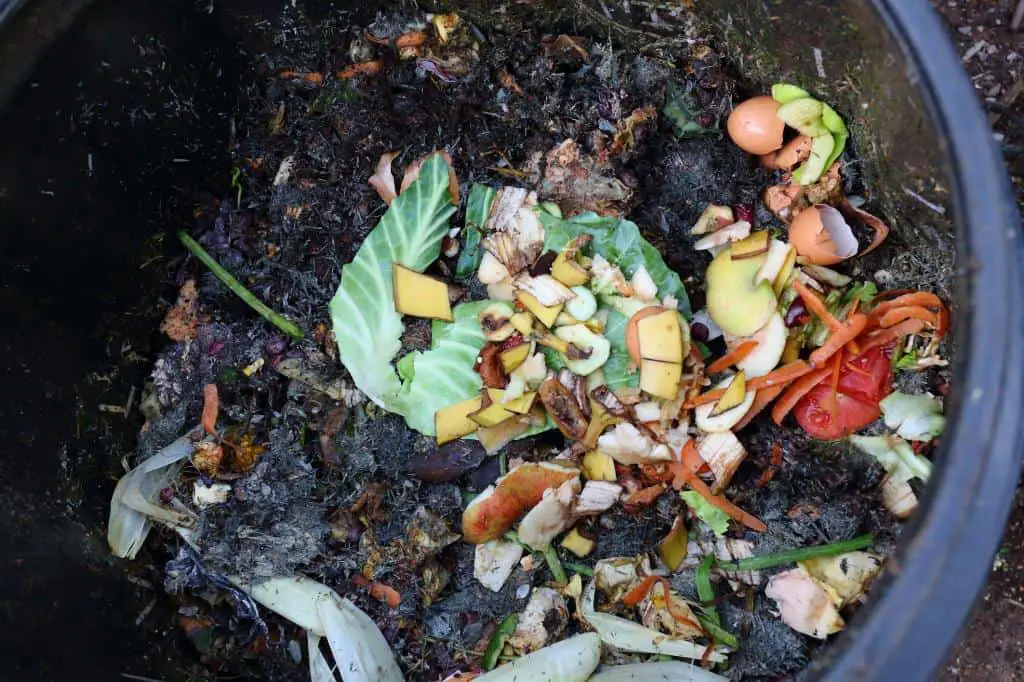
Welcome to the magical world of composting, where kitchen scraps and garden waste transform into the elixir of life for your beloved plants. But hold on, before you unleash this organic treasure onto your garden, there’s a vital step to ensure your green oasis thrives: sterilizing compost. Yes, just like a protective shield, sterilization ensures harmful pathogens and pesky weed seeds don’t sneak into your garden party.
Fear not, for we’ve got you covered with an easy-to-follow guide on how to sterilize compost like a pro. Say goodbye to plant diseases and hello to nutrient-rich, flourishing soil that’ll make your neighbors green with envy. Let’s dive in and discover the secrets of turning your compost into a powerful elixir for your garden’s success!
Introduction to Compost Sterilization
Compost sterilization might sound like a complex process, but in reality, it’s a straightforward and essential practice for any gardener or farmer. The main goal is to ensure that the compost used in soil enrichment is free from harmful pathogens and pesky weed seeds. This way, you can provide your plants with the best possible environment to flourish.
Why is compost sterilization so important? Well, think of it this way: compost is a natural and nutrient-rich source of organic matter, but it can also harbor unwanted guests like bacteria, fungi, and weed seeds. If left unchecked, these intruders can wreak havoc on your plants, leading to disease outbreaks and reduced crop yields. Sterilizing the compost puts these problems to rest, giving your plants a clean slate to grow and thrive.
Now, let’s explore various effective methods to sterilize compost. From simple yet effective heat treatments to more advanced techniques like solarization and pasteurization, we’ll cover them all.
Understanding Compost and Its Benefits
Compost is a nutrient-rich, organic matter formed through the decomposition of kitchen scraps, yard waste, and other biodegradable materials. It acts as a natural fertilizer, providing essential nutrients to plants, improving soil structure, and promoting moisture retention.
The advantages of compost usage are manifold. It enhances soil fertility, aids in the growth of beneficial soil microorganisms, and helps plants develop stronger root systems. Additionally, compost contributes to better water drainage, reducing the risk of soil erosion and runoff.
Compost works as a soil conditioner, enhancing soil structure by loosening dense clays and improving aeration in sandy soils. It acts as a reservoir for water and nutrients, ensuring a steady supply of essential elements for plants. By fostering a balanced soil ecosystem, compost ultimately contributes to sustainable and thriving vegetation.
Why Sterilize Compost?
Before we delve into the how-to, it’s crucial to understand why compost sterilization matters. While composting is an eco-friendly practice that reduces waste and enriches the soil, it can also contain unwanted guests like bacteria, fungi, and weed seeds. These unwelcome additions can hinder the growth of your plants and even lead to diseases.
Unprocessed compost may contain harmful pathogens and pesky weed seeds that can sabotage your gardening efforts. Without proper sterilization, these elements might propagate, leading to plant diseases and unwanted weed infestations.
The Benefits of Sterilizing Compost
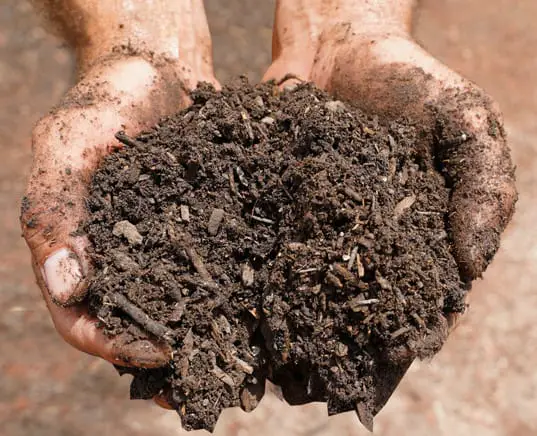
The benefits of sterilizing compost go beyond the peace of mind that you’re providing a safe environment for your plants. Here are some additional advantages:
- Weed Control: Sterilizing compost helps prevent weed seeds from germinating, saving you from unwanted wedding tasks.
- Disease Prevention: Eliminating harmful pathogens reduces the risk of diseases spreading among your plants, fostering a healthier garden ecosystem.
- Faster Breakdown: Sterilization breaks down organic matter more efficiently, releasing nutrients faster and supporting robust plant growth.
- Consistency: Sterilization creates a consistent compost product, ensuring your plants receive a balanced diet of nutrients.
Using unsterilized compost poses a significant risk to your plants. Pathogens can cause diseases, stunt plant growth, or even kill plants. Weeds compete with your cultivated plants for nutrients, water, and sunlight, hampering their overall health and productivity.
By sterilizing compost, you’ll eliminate these potential threats, creating a clean slate for your garden to prosper. Plus, sterilization speeds up the decomposition process, making the nutrients more accessible to plants and facilitating better growth.
How to Sterilize Compost (Step-by-Step Guide)
1. Heat Sterilization
One of the most effective ways to sterilize compost is through high-temperature techniques. Heating the compost to temperatures between 140-160°F (60-71°C) for an extended period can eliminate pathogens and weed seeds.
Heat sterilization is one of the most common and effective methods. It involves using heat to kill pathogens and weed seeds. To sterilize your compost, follow these steps:
- Fill a metal compost bin or a large pot with the compost you want to sterilize.
- Place the bin or pot on a heat-resistant surface like concrete or bricks to prevent scorching your lawn or patio.
- Cover the bin with a lid or use a piece of metal mesh to contain the compost while allowing steam to escape.
- Insert a thermometer into the compost to monitor the temperature and ensure it reaches around 140-160°F (60-71°C).
- Maintain the temperature for at least 30 minutes to ensure effective sterilization.
- Let the compost cool down before using it in your garden.
2. Solarization
Solarization, on the other hand, involves covering moistened compost with clear plastic to trap heat and raise temperatures. Solarization is a natural and straightforward method that utilizes the sun’s heat to sterilize compost. Here’s how to do it:
- Spread the compost in a thin layer, no more than 4 inches deep, on a clear, sunny area of your garden.
- Moisten the compost to around 40-60% of its water-holding capacity.
- Cover the compost with a transparent plastic sheet, securing the edges with rocks or soil to trap the heat.
- Leave the compost to solarize for 4 to 6 weeks during hot summer months.
- After solarization, mix the compost to ensure even heat distribution and use it once it cools down.
3. Steam Sterilization
Steam sterilization is an effective commercial method used on a larger scale. It requires specialized equipment, like steam sterilization machines. If you have a substantial composting operation, this might be worth considering.
To steam sterilize your compost, follow these step-by-step instructions:
- Begin by moistening the compost to the proper level—too dry, and it won’t sterilize evenly; too wet, and it might become anaerobic. Achieving the right moisture content ensures uniform heat distribution during sterilization.
- Choose a reliable steam source, such as a pressure cooker or steam-generating machine. These provide the necessary heat to raise the compost’s temperature effectively.
- Place the compost in a suitable container and introduce the steam source. Monitor the temperature carefully, ensuring it reaches and maintains the target range of 140-160°F (60-71°C) for about 30 minutes. This duration is essential to eliminating pathogens and weed seeds thoroughly.
- Once sterilization is complete, allow the compost to cool down before use. The cooling period permits the reintroduction of beneficial microorganisms that might have been affected during the process.
4. Chemical Sterilization
Chemical sterilization offers an effective approach to ensuring your compost is free from harmful pathogens and weed seeds, promoting healthy soil and thriving plants. While this method requires careful handling, it can be a valuable tool for gardeners seeking an alternative to high-temperature techniques.
Using chemical agents like hydrogen peroxide, you can achieve sterilization efficiently, giving you peace of mind and a bountiful garden.
To chemically sterilize your compost, follow these step-by-step instructions:
- Selecting the Chemical Agent: Choose a suitable chemical sterilization agent like hydrogen peroxide. Ensure it is of high quality and appropriate for compost treatment.
- Proper Application: Dilute the chemical agent as per the manufacturer’s instructions. Avoid using excessive amounts that might harm your compost or plants.
- Treating the Compost: Thoroughly mix the diluted chemical solution with the compost. Ensure it reaches all parts of the compost to target pathogens and weed seeds effectively.
- Safety Precautions: Wear appropriate protective gear, such as gloves and a mask, while handling the chemical agent. Safety should always be a top priority.
- Environmental Considerations: Take care to dispose of any leftover chemical solution responsibly, following local guidelines. Be mindful of potential environmental impacts and ensure the treated compost is safe for plants and beneficial organisms.
Alternative Approaches to Sterilizing Compost
1. Biological Methods for Pathogen Control
Beneficial microorganisms, such as compost tea or effective microorganisms (EM), can be employed to outcompete harmful pathogens, effectively suppressing their growth without the use of chemicals.
2. Fermentation and Anaerobic Techniques
Anaerobic fermentation, which involves sealing compost in an airtight container, can also suppress pathogenic growth through the production of beneficial lactic acid bacteria.
3. The Pros and Cons of Each Alternative Method
While these alternative methods are more eco-friendly, they might not offer the same level of sterilization as high-temperature techniques or chemical agents. Consider the specific needs of your garden or agriculture practice before choosing an approach.
Guide: How to Sterilize Soil for Microgreens Successfully
Best Practices for Using Sterilized Compost in Soil
Different types of soil may require varying amounts of sterilized compost. Understanding the composition and needs of your soil will help determine the optimal ratio for compost incorporation.
As a general guideline, a compost-to-soil ratio of 1:4 (20% compost) is often recommended for most gardening applications. However, this can be adjusted based on soil quality and the specific needs of the plants being cultivated.
Regularly incorporating sterilized compost into your soil helps maintain soil fertility and overall health in the long term. Continue monitoring the soil’s condition and amending it as needed to sustain a thriving garden or productive agricultural land.
Compost Sterilization Method Suitable for Large-Scale Agricultural
When it comes to large-scale agricultural applications, heat sterilization is a highly effective method for compost sterilization. This technique involves subjecting the compost to high temperatures, typically between 140-160°F (60-71°C), for an extended period. Large-scale composting facilities often use specialized equipment like compost turners and windrow systems to manage and control the process efficiently.
The heat generated during large-scale composting not only eliminates harmful pathogens and weed seeds but also accelerates the breakdown of organic matter. This results in a more refined and nutrient-rich compost, perfect for enhancing soil health on a larger scale. Moreover, heat sterilization minimizes the risk of introducing diseases or weeds to vast agricultural fields, ensuring the success of crop yields and promoting sustainable farming practices.
The table below highlights the pros and cons of using heat sterilization for large-scale agricultural composting:
PROS
CONS
- Efficient pathogen and weed seed elimination.
- Accelerates compost decomposition
- Yields nutrient-rich, refined compost
- Reduces the risk of crop diseases
- Requires specialized equipment
- High-energy consumption
- Careful temperature monitoring required
- Potential greenhouse gas emissions
For large-scale agricultural operations, investing in heat sterilization equipment and implementing proper temperature monitoring protocols can pay off in the form of healthier soils, improved crop yields, and long-term sustainability.
Commercial Products for Sterile Organic Matter Production
There are several commercial products available for sterile organic matter production. Some of these products are:
- Commercial composts: These are made from a wide variety of organic materials such as agricultural and food wastes, animal manure, grass clippings, and leaves. Many commercial composts are made using U.S. Composting Council guidelines.
- OMRI-listed seed starting mix: OMRI (Organic Materials Review Institute) reviews products to make sure they are acceptable for certified organic production. Organic seed starting mix is used for seedlings and is certified safe for organic gardening.
- Commercial organic potting media: This is used for transplanting and is available from companies such as Peace Farm Organics. OMRI is a third-party that reviews products to ensure they are safe for organic production.
- Inorganic plant growth enhancers (PGEs): These are composed of synthetic chemicals and/or minerals. Organic PGEs are often composed of organic matter from plant/animal sources, and/or microbes. Organic amendments may include materials such as manure, earthworm castings, soil, sphagnum peat, grass clippings, straw, wood chips, various composts, seaweed, guano, or naturally occurring mineral deposits.
- Peat mosses, peat, composted organic matter, bark chips, and coconut coir: These are common organic ingredients used in potting soil.
- Zoo Poo: This is rich in nutrients and an excellent source of organic matter. It is available for commercial customers with a $20 minimum.
Conclusion
In conclusion, mastering the art of compost sterilization is a game-changer for maintaining healthy soil and thriving plants. By using heat to kill pathogens in compost, you can ensure that your organic matter is free from harmful intruders, setting the stage for a flourishing garden or farm.
The best part is that you don’t need to rely on harsh chemicals to sanitize your compost. With a range of chemical-free methods available, you can create a safe and natural environment for your plants to grow while being kind to the earth.
Moreover, sterilized soil amendments crafted from home-composted materials give you complete control over the quality and safety of your compost. You can rest assured that you’re providing your plants with the best possible nourishment, free from any potential threats.
Whether you’re preparing a sterile potting mix for your indoor plants or enriching your garden soil, the process of compost sterilization is well worth the effort. It not only ensures healthy soil but also contributes to sustainable gardening practices. So, go ahead and dive into the world of compost sterilization, and watch your garden thrive like never before!
FAQs on Best Practices for Compost Sterilization
Can I use unsterilized compost in established gardens?
In established gardens with robust plant health and thriving soil ecosystems, unsterilized compost may not pose significant risks. However, exercising caution and using sterilized compost for new plantings or in problematic areas is advisable.
Can I sterilize compost using a microwave or oven?
While it is technically possible to use a microwave or oven for small quantities of compost, these methods are less efficient and may not yield consistent results. High-temperature techniques or solarization are more effective for larger compost batches.
Is compost sterilization necessary for organic farming?goals by reducing the need for chemical interventions.
Yes, even in organic farming and gardening, compost sterilization can be beneficial. Organic practices focus on sustainability and minimizing harm to the environment, and sterilization can help achieve those goals by reducing the need for chemical interventions.
Can I use compost sterilization to revive unhealthy plants?
While compost sterilization helps prevent plant diseases and weed infestations, it may not necessarily cure existing issues with unhealthy plants. Address underlying problems like poor soil quality, watering issues, or pest infestations to revive sickly plants.
Does compost sterilization kill beneficial microorganisms?
High-temperature sterilization and chemical methods can potentially affect beneficial microorganisms in compost. However, their populations can recover quickly in the post-sterilization cooling and handling phases.
Can I sterilize compost without using any specialized equipment?
Yes, solarization and some biological methods of sterilization can be achieved without specialized equipment. These approaches are more accessible and can be practical for small-scale gardening or home composting.
How long does it take to solarize compost effectively?
Solarization takes approximately 4 to 6 weeks during hot summer months to effectively sterilize compost and eliminate harmful pathogens and weed seeds.
Is sterilized compost suitable for all types of plants?
Yes, sterilized compost is generally suitable for most plants. It provides a clean and nutrient-rich environment that supports the growth of a wide variety of plant species.
Can I skip compost sterilization if I use high-quality compost from reliable sources?
If you trust the source and quality of your compost, skipping sterilization may be acceptable. However, it’s always beneficial to sterilize compost to ensure optimal soil health and minimize risks.

